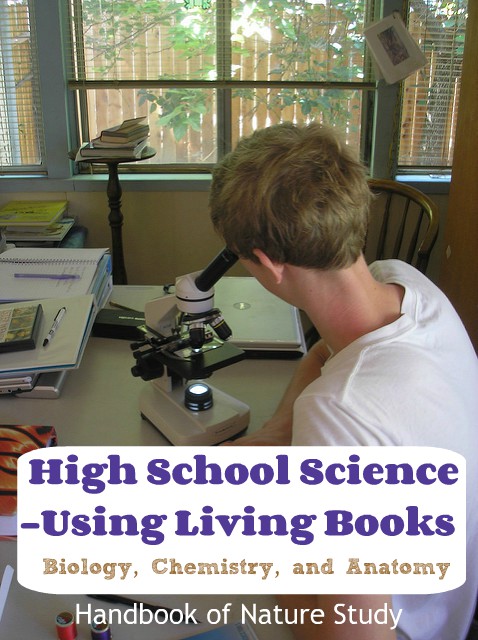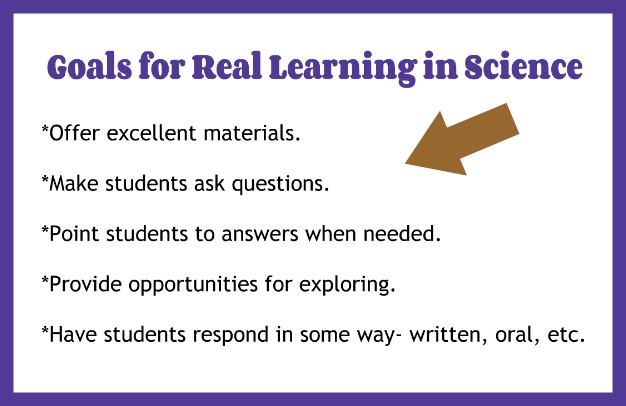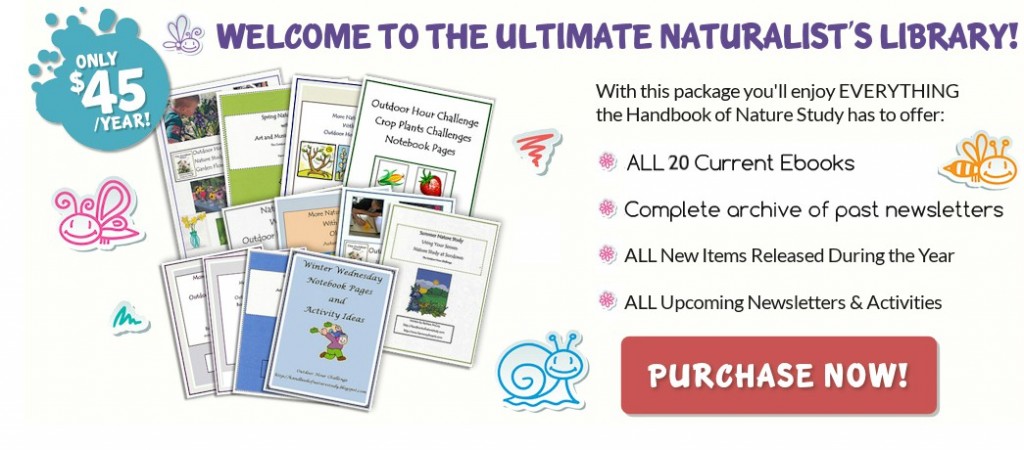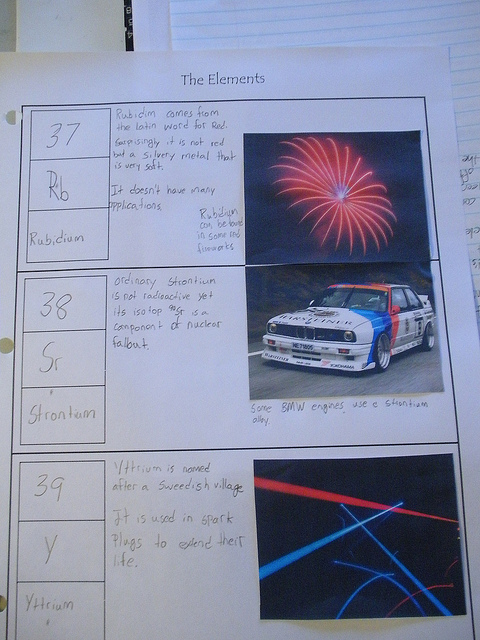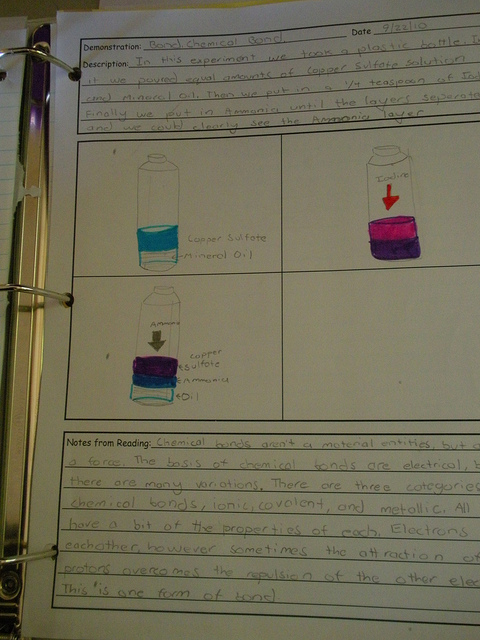Homeschooling for high school using the Charlotte Mason method is a dynamic and living way to teach children. It gives your family room to personalize their learning.
Living ideas are derived only from living minds.
Homeschooling using the Charlotte Mason style is marked by a use of good living books. Living books are books that are written by someone who has a passion or interest in the subject, usually in a conversational or narrative style.
When I homeschooled my teenage sons, I tried to include living books in every science course. These kinds of books drew interest and excitement to the topics we learned about in our science curriculum.
A good living book is worth its weight in gold and can give even the most reluctant student a reason for digging deeper into various aspects of science.
Inspiration versus Information
My aim in homeschooling my children was to inspire a love of learning and not just to feed them dry facts. Living books inspire thinking and don’t just provide information. Think back to when you were in school and you had a true learning experience, one that impressed you and has stuck with you all these years later. In my experience, those times were inspired either by passionate people fired up about a topic, a book that was written to give you a window into another time or person’s life, or when you made a connection from the written page and related to your real life in some way.
It takes less energy to learn something from a living book than it does from a text. Learning takes place without all the effort to memorize and drill the facts. Learning takes place because it is meaningful and you own it right from the first reading.
“A book may be long or short, old or new, easy or hard, written by a great man or a lesser man and yet be the living book which finds its way to the mind of a young reader.”
Charlotte Mason Homeschooling Series, Volume 3
Living Books in High School
How to Use Living Books in Your Science Courses
Most of us feel more comfortable using a text as the foundation of our high school science courses. This doesn’t mean that we need to limit our assignments to the text. Why not add in a few living books to supplement your learning? I found that when I left one day open during the school week for a living book reading and follow-up narration, we enjoyed our studies so much more. It balanced out the textbook learning and made it more meaningful.
Tips for Offering Living Books in High School Science
1. Assign a living book each week. I broke longer books down by chapters or pages and assigned a short reading each week.
2. Allow for some kind of narration – oral, written (summary on a notebook page works well), project, or additional research.
3. Look for ways to connect the text to your living books selections by pulling in biographies of scientists or explorers.
4. Create interest in a topic by drawing connects between the text and your nature study.
5. When on field trips, look in the bookstore at the museum, science center, nature center, planetarium, or state/national park for living books you can include in your science courses.
Living Books for High School Biology
“They learn what to observe, and make discoveries for themselves, original so far as they are concerned. They are put in the right attitude of mind for scientific observations and deductions, and their keen interest is awakened.”
Charlotte Mason Homeschooling Series, Volume 3
 Our main text was Apologia’s Exploring Creation with Biology.
Our main text was Apologia’s Exploring Creation with Biology.
Text = Apologia Biology: If you’re using this text, I have written a blog entry sharing how we incorporated nature study into each of the modules in the book. It has detailed suggestions of topics, additional books, and nature study ideas for you to use as inspiration.
High School Science (biology) and Charlotte Mason
Please note that this entry includes Amazon affiliate links to books we have owned, used, and loved!
This is the foundation of all of our informal biology study from elementary age to high school age. I have written dozens of nature study lessons based on this book.
I have written lots of advanced nature study ideas and included them in my Outdoor Hour Challenge ebooks. My high school aged sons used these as a weekly supplement to their biology study.
Here are particular ebooks that you may find helpful in planning a high school level nature study course. You can click this link to find all of these ebooks: Handbook of Nature Study.
- Autumn, Winter, Spring, Summer Nature Study Continues Series – includes advanced nature study ideas and advanced notebooking pages for follow-up learning and narration.
- More Autumn, Winter, Spring, Summer Nature Study Series – includes advanced nature study ideas and advanced notebooking pages for follow-up learning and narration.
All of these ebooks are available in my Ultimate Naturalist Library membership. This membership includes all 21 of my nature study ebooks, 76 archived nature study newsletters, and a growing library of additional printable notebook pages and activities.
Here are the additional “living books” we added in to fit the interests and learning styles of our children.
Origin of Species: 150th Anniversary Edition: This is a must read for all biology students in my opinion…no matter what your personal beliefs are.
Darwin’s Black Box: The Biochemical Challenge to Evolution: The flipside of the Origin of Species.
Microbe Hunters: Short accounts from a range of scientists.
Carl Linnaeus: Father of Classification (Great Minds of Science: We used simple straight forward biographies as jumping off spots for more research.
Other Biographies: Gregor Mendel, Louis Pasteur, Rachel Carson, Anna Botsford-Comstock, George Washington Carver, John Muir, Jacques Cousteau.
Here’s a link to my Amazon.com page for field guide suggestions: Field Guides for Families.
Field guides for all subjects are an absolute MUST: Trees, Wildflowers, Birds, Mammals, Insects, Mushrooms. Taking the information from a text and then going outside to observe your subjects brings the study to a new level. If you take the time to use a field guide, now you have real knowledge about the real world.
Living Books for High School Chemistry
These books can all be used for narration exercises. My boys kept a written summary of each of the books on notebook pages.
Elements: A Visual Exploration of Every Known Atom in the Universe: We would learn about 2 or 3 elements a week by reading the book, researching more on their website, and then completing a notebook page for each element.
Wicked Plants: The Weed That Killed Lincoln’s Mother and Other Botanical Atrocities: My boys love the “dangerous” side of chemistry. I love that it ties in chemistry and nature study.
Napoleon’s Buttons: How 17 Molecules Changed History: This one you might want to preview. I didn’t like it as much as some people do, but my boys enjoyed reading it and narrating back to me at our weekly discussions.
The Joy of Chemistry: The Amazing Science of Familiar Things.: This is much more than a lab idea book. There’s a narrative chapter and then a demonstration of the concept that uses fairly easy to find materials. Great supplement to any chemistry course you are completing.
Living Books for Human Anatomy
Human anatomy is a fascinating look at our own bodies. Dry textbooks can provide information in an organized way but a good living book will give the student something to think about and to observe in their own body. We have used the following books as the complement to our text.
The Way We Work: Getting to Know the Amazing Human Body: My son loves the artwork and the text narrative in this book. Like all David Macaulay books, it is full of interesting facts that are shared in an enjoyable way. My son copied some of the illustrations into his anatomy notebook with colored pencils….all inspired by this book.
I Am Joe’s Body (A Berkley/Reader’s Digest book): This simple book is a quick read but gives lots of ideas and things to think about. It’s worth finding used and having for your high school age student.
Fearfully and Wonderfully Made: This was one I wasn’t sure about until we received it and read through the first few chapters. I found it interesting and supportive of our Christian point of view.
Leonardo’s Anatomical Drawings (Dover Art Library: This is another great resource for learning to draw in a science notebook. Drawn from Leonardo’s personal notebooks!
Exploring the History of Medicine: More like a text than any of the other books, but we devoured the stories in this book. We skipped the questions and used the table of contents as a jumping off spot for further research and narration.
Mr. Fisher says, ‘There are real books, and there are textbooks.’ The day is soon coming when everyone will realize that textbooks have no educational value. We hardly ever use textbooks in our Parents Union Schools. Whenever possible, we use books that spark the imagination and have a touch of originality. These are the differences between a real book and a text book.
Charlotte Mason Homeschooling Series, Volume 6
Additional Links to Science Related Blog Entries I’ve Written:
- Charlotte Mason Gave Our Homeschool Wings: Reflecting on CM’s methods in our homeschool.
- Planning Astronomy: My process of finding living books for astronomy.
- Homeschool Science Things I Would Have Done Differently: Five things I would have done differently if I could start over with science.
- Science Lab Write Ups – Narration: This entry shows a couple examples of science lab narrations.
- Making Apologia Texts Work in Our Family: My real life experience with Apologia science texts shows how we adapt to fit our learning styles and tastes using some alternative methods.
- Apologia Physical Science with a Charlotte Mason Style: This entry is answering a question from a reader about the Apologia Physical Science text.
- My Review of Apologia Physics After Using it for a Year: Our first hand experience using this text for high school.
I’ve long been a fan of the Story of Science series by Joy Hakim. We used these science books alongside our history lessons. I love the layout of these books and the information is presented in a chronological order. I’m including them in this post because my teenage sons thoroughly enjoyed reading these books because of the narrative style and the obvious love for science that the author shares. You could very easily include these in your living books list for science, perhaps covering a chapter or two a week. This would make these books span a few years’ time.
Story of Science Series – link to see more about these books, including sample chapters to download and read.
There are ways to draw in living books to every topic if you search hard enough. Our study of chemistry, physics, marine biology, and human anatomy have all been enhanced by selected living books offered every week for narration of some sort. Some of the books we stumbled upon, some were recommended by blog readers and friends, and some we already had on our shelves; we just needed to get them down off the shelf and read them one at a time.
I encourage you to consider including living books alongside any science text you offer to your students. You will not regret your decision!

